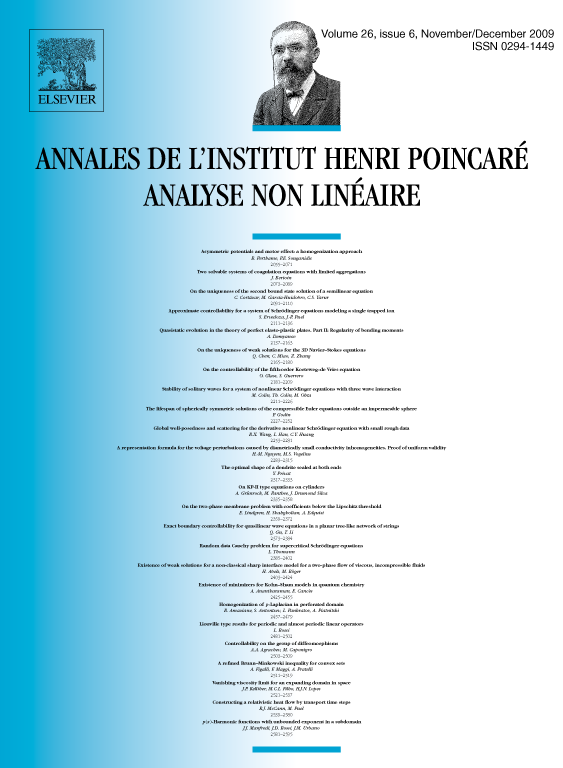Asymmetric potentials and motor effect: a homogenization approach
Panagiotis E. Souganidis
The University of Texas at Austin, Department of Mathematics, 1, University Station – C1200, Austin, TX 78712-0257, USABenoît Perthame
Université Pierre et Marie Curie–Paris 6, and Institute Universitaire de France, CNRS, UMR 7598 LJLL, BC187, 4, place Jussieu, 75252 Paris 5, France

Abstract
We provide a mathematical analysis for the appearance of motor effects, i.e., the concentration (as Dirac masses) at one side of the domain, for the solution of a Fokker–Planck system with two components, one with an asymmetric potential and diffusion and one with pure diffusion. The system has been proposed as a model for motor proteins moving along molecular filaments. Its components describe the densities of different conformations of proteins.
Contrary to the case with two asymmetric potentials, the case at hand requires a large number of periods in order for the motor effect to occur. It is therefore posed as a homogenization problem where the diffusion length is at the same scale as the period of the potential.
Our approach is based on the analysis of a Hamilton–Jacobi equation arising, at the zero diffusion limit, after an exponential transformation of the phase functions. The homogenization procedure yields an effective Hamiltonian whose properties are closely related to the concentration phenomena.
Cite this article
Panagiotis E. Souganidis, Benoît Perthame, Asymmetric potentials and motor effect: a homogenization approach. Ann. Inst. H. Poincaré Anal. Non Linéaire 26 (2009), no. 6, pp. 2055–2071
DOI 10.1016/J.ANIHPC.2008.10.003